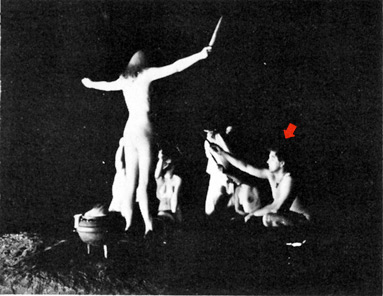Who is the ghost from limbo patrum, returning to the world that has forgotten him?
When analyzing cremated remains it is important to be aware of the broader burial and not focus so narrowly on the remains themselves if one wants to be able to understand the funeral process. We can learn a lot about the funeral from the bones themselves when they have been burned. The coloring on the remains, the amount of warping and the completeness can reveal fire temperature, how the body was placed on the pyre, whether it was clothed or was burned as dried bone, and if there were any problems with the burning (such as interruption by weather or incomplete incineration). However, often when cremation remains are collected there are macrobotanical or charcoal fragments which can further aid in interpretation by revealing details of the actual pyre construction.
Moskal-del Hoyo (2012) discusses the charcoal remains from Polish cremation necropoli in a new article from the Journal of Archaeological Sciences. She posits that analysis of the wood remains from pyre construction could be revealing about the identities of the individuals and the various necropoli.



